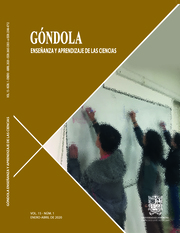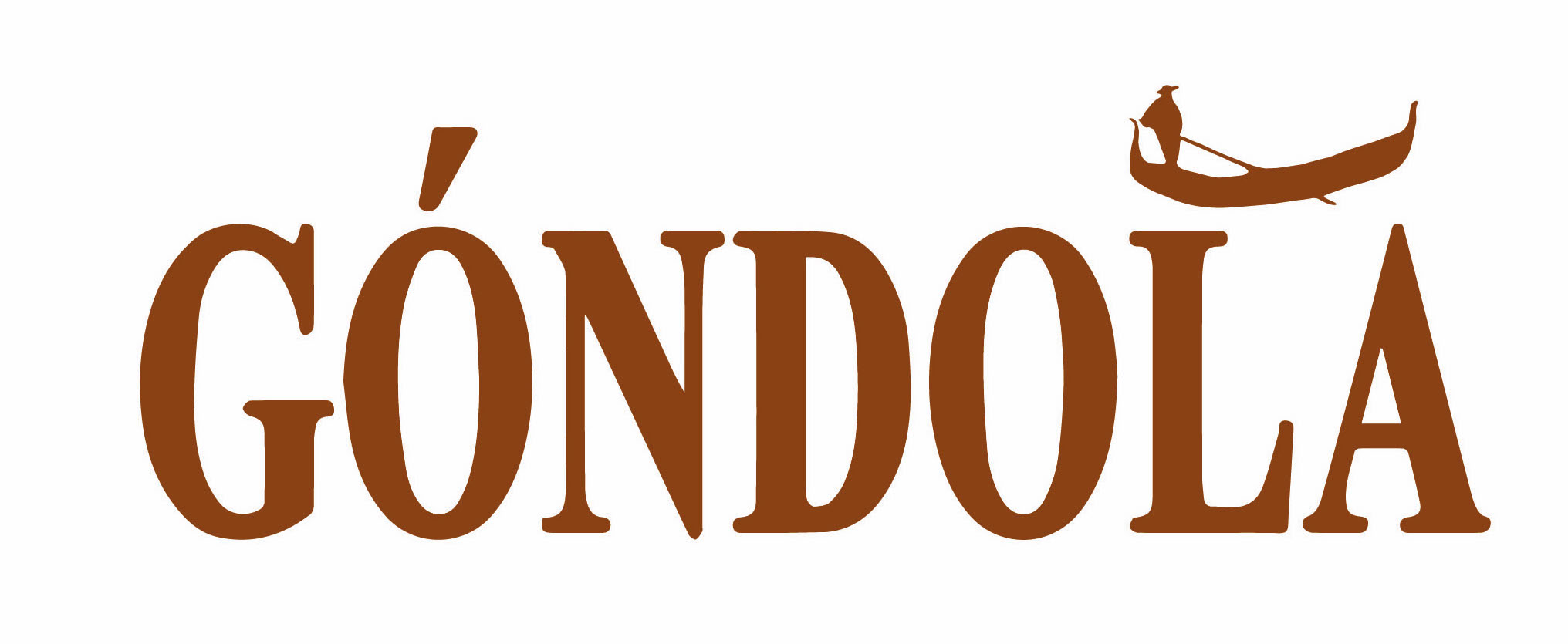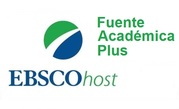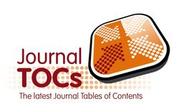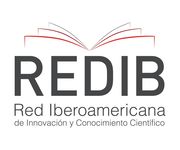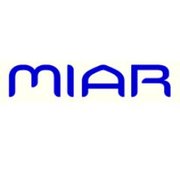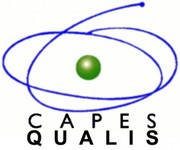DOI:
https://doi.org/10.14483/23464712.15330Publicado:
2020-01-01Tittle book: An introduction to qualitative research. Author: Uwe Flick
Libro: Una introducción a la investigación cualitativa. Autor: Uwe Flick
Livro: Uma introdução à pesquisa qualitativa. Autor: Uwe Flick
Palabras clave:
qualitative research (en).Palabras clave:
investigación cualitativa (es).Palabras clave:
pesquisa qualitativa (pt).Descargas
Cómo citar
APA
ACM
ACS
ABNT
Chicago
Harvard
IEEE
MLA
Turabian
Vancouver
Descargar cita
BOOK TITLE: AN INTRODUCTION TO QUALITATIVE RESEARCH
Olga Castiblanco*, Diego Vizcaino**
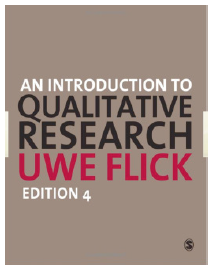
Author: Uwe Flick
Publisher: SAGE, 4th Edition (2009)
City: London
Language: English
Pages: 505
* Degree in Physics from the Universidad Distrital Francisco José de Caldas (Colombia); Master in Physics Teaching from the Universidad Pedagogica Nacional (Colombia); PhD in Science Education from UNESP (Brazil). She is currently a professor and researcher at the UDFJC in Didactics of Physics. E-mail: olcastiblancoa@udistrital.edu.co
** Doctor in Science Education, Colombia. E-mail: diegofabvizcaino@uan.edu.co
Introduction
This book is a good referential guide for both novice and experienced researchers because it gives detailed descriptions of qualitative research and offers information that leads to a deeper understanding of the subject.
Additionally, it is noted that the book introduces current issues, including ethics in qualitative research, the use of literature in qualitative research, the relationship between qualitative and quantitative research and qualitative online research, in relation to each topic. In the final chapter, the author pro-poses the future of qualitative research as a combination of art and method.
1. Background
The author presents four moments that appear in the course of qualitative research: the presentation or derivation of the initial theory, the construction of the text, interpretation and the production of a new theory. We represent this idea in Figure 1.
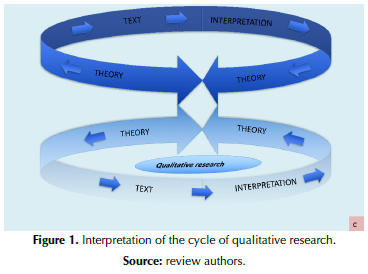
The initial theory is the basis for defining how the field of study is to be accessed. Once the researcher is already working on the topic a text should be constructed that arises from the data obtained. The choice of instruments for data collection and their use must be chosen with care because a new theory might be constructed from the interpretation of the text.
This text is constructed based on the systematization and organization of data as well as the measured codes and categories of the analysis, whether previously established or emerging from the process. The interpretation of the text corresponds to the study of data from the frame of reference that guides the investigation. This makes the formulation of inferences possible, which leads to the construction and reorganization of knowledge and ultimately to the production of new knowledge.
Although the author describes this process as a sequence of phases, it does not mean that all types of research must proceed in that order. The author explains why research must comply with these moments, even though they may occur as repetitive cycles, equally able to lead back or advance within the process. Finally, the author evidences that researchers must develop criteria to correlate the initial theory with the newly constructed one.
2. Critical assessment
Next, we present our interpretation of the book’s contents, which does not follow the order in which the chapters appear, but addresses relevant aspects for researchers, in particular the novices that require an overview of the components of qualitative research to be obtained.
We start by highlighting the author’s presentation of the series of decisions that researchers must make in each of the research phases, which can define the investigation identity. For this, the author explains in detail why it is necessary to define the objectives and limits of the research as clearly as possible before approaching the field of study as well as explain the most appropriate methodology to study the topic in question. This enriches decision-making on the duration of the process, the persons and contexts involved and how the research subjects might be affected by becoming participants in the investigation. After all of these decisions, the investigator is able to select the field and consequently understand how the research cycle will begin and end. In Figure 2, we represent some aspects that characterize each phase of the research.

Subsequently, the decision-making regarding the preparation to enter the field comes, which implies considering a series of factors to guarantee the seriousness and reliability of the investigation, depending on how the interaction between actors of the research occurs, whether the data will be reliable or will be possible to study them properly. Itcan happen, for example, that the data obtained are too few or too many, or that they cause perplexity. In all of these cases, it will be extremely difficult to draw conclusions from the research. For this reason, it is extremely important to carefully choose data collection instruments and the ways to apply them, always seeking relevance to the field and reliability for the information obtained. In Figure 3, we describe strategies that can be used to select the target field.
Then, the data are processed to constitute a text, after which the need to make decisions on the coding methodology arises. To accomplish this, the researcher must know how to properly identify units of analysis and criteria to organize them to consolidate categories of analysis. These can be around words, phrases, documents, events, speeches, people or groups from which an appropriate set of evidence can be organized to address the research questions.
The researcher must make decisions about the criteria for use to treat the categories of analysis. It should be clear from the outset whether the study will proceed from the general to the particular or vice versa. The researcher should also be clear about how the categories should be related to each other to make sense of the answers found. Similarly, the researcher must decide what approach should be used to determine the problem under study, keeping in mind the level of depth achieved. In Figure 4, we represent the process of data analysis, beginning with the initial text and passing from codification to categorisation.
It is important to note that not all interpretations are grounds for a valid theory, so it is necessary to ensure that what is chosen can guarantee the reliability of the data analysis. One strategy proposed by the author to achieve reliable interpretations is the use of triangulation methods because these promote comparative studies that exhibit reduced subjectivity or bias in the analysis.
Flick suggests four possible methods of triangulation, basically presenting it as a comparison between data or between methods of data collection, applied to achieve greater objectivity and accuracy for the construction of the text. Hence, the researchermust decide which method or set of methods is more suitable for the work. These methods are: 1) triangulation of theory, 2) triangulation of data, 3) triangulation of researchers and 4) methodological triangulation.
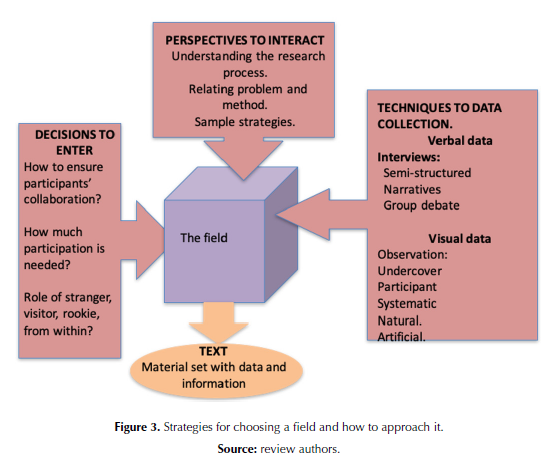
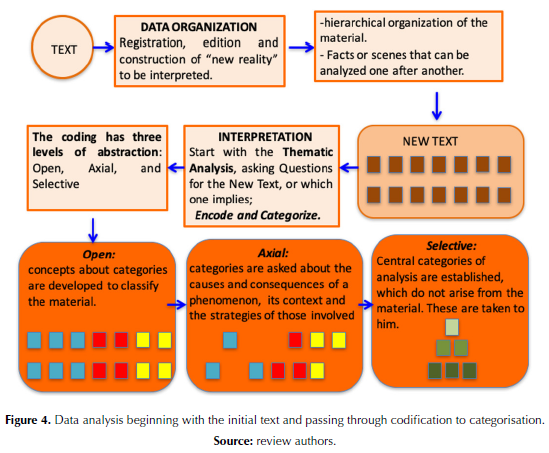
Triangulation of theory consists of analysis on the same data considering multiple hypotheses and perspectives to expand the possibilities of knowledge production. Researcher triangulation is not a division of labour among researchers, but a systematic comparison of the vision of different researchers of the same data. The triangulation of data relates to obtaining information at different times, or from different actors in the same process, which can be integrated to construct answers to the research question. Methodological triangulation is to define the use of subscales to measure an item within a method or the use of different methods to obtain the same data.
Another interesting aspect to highlight in this work is that besides developing the foundations and techniques for each moment in qualitative research, the book indicates why the research process advances by cycles around the interpretation, what guides decision-making and the character that will take the final product. Ultimately, qualitative research is not a linear process but a complex one that requires rigour.
The author also describes the characteristics of the researcher. We found this fact of great interest be-cause beyond the importance of mastering theories that define qualitative research, the researcher must assume as a responsible person who is aware of the value that a subject can have that can influence the quality of the results. The following characteristics are presented:
-Honest discussion of the relationship between the results found and the information presented, with the greatest transparency about the process;
-Clarity regarding the different relationships that operate within the research process, that is, un derstanding their role in the context under study;
-A broad and well-founded view on the presen tation of a phenomenon and the development of appropriate inferences and analysis. This implies the ability to think flexibly to be able to interact with “what is new” and with constantly changing realities while not manipulating one’s data to imply something in particular has occurred in one’s study;
- Knowledge of both qualitative and quantitative research, without overvaluing either, seeing them as different ways of presenting results properly and
- Necessary skills to organize new networks and structures.
Licencia
Góndola, Ens Aprend Cienc. es una publicación de acceso abierto, sin cargos económicos para autores ni lectores. La publicación, consulta o descarga de los contenidos de la revista no genera costo alguno para los autores ni los lectores, toda vez que la Universidad Distrital Francisco José de Caldas asume los gastos relacionados con edición, gestión y publicación. Los pares evaluadores no reciben retribución económica alguna por su valiosa contribución. Se entiende el trabajo de todos los actores mencionados anteriormente como un aporte al fortalecimiento y crecimiento de la comunidad investigadora en el campo de la Enseñanza de las Ciencias.
A partir del 01 de diciembre de 2018 los contenidos de la revista se publican bajo los términos de la Licencia Creative Commons Atribución–No comercial–Compartir igual 4.0 Internacional (CC-BY-NC-SA 4.0), bajo la cual otros podrán distribuir, remezclar, retocar, y crear a partir de la obra de modo no comercial, siempre y cuando den crédito y licencien sus nuevas creaciones bajo las mismas condiciones.
Los titulares de los derechos de autor son los autores y la revista Góndola, Ens Aprend Cienc. Los titulares conservan todos los derechos sin restricciones, respetando los términos de la licencia en cuanto a la consulta, descarga y distribución del material.
Cuando la obra o alguno de sus elementos se halle en el dominio público según la ley vigente aplicable, esta situación no quedará afectada por la licencia.
Asimismo, incentivamos a los autores a depositar sus contribuciones en otros repositorios institucionales y temáticos, con la certeza de que la cultura y el conocimiento es un bien de todos y para todos.

